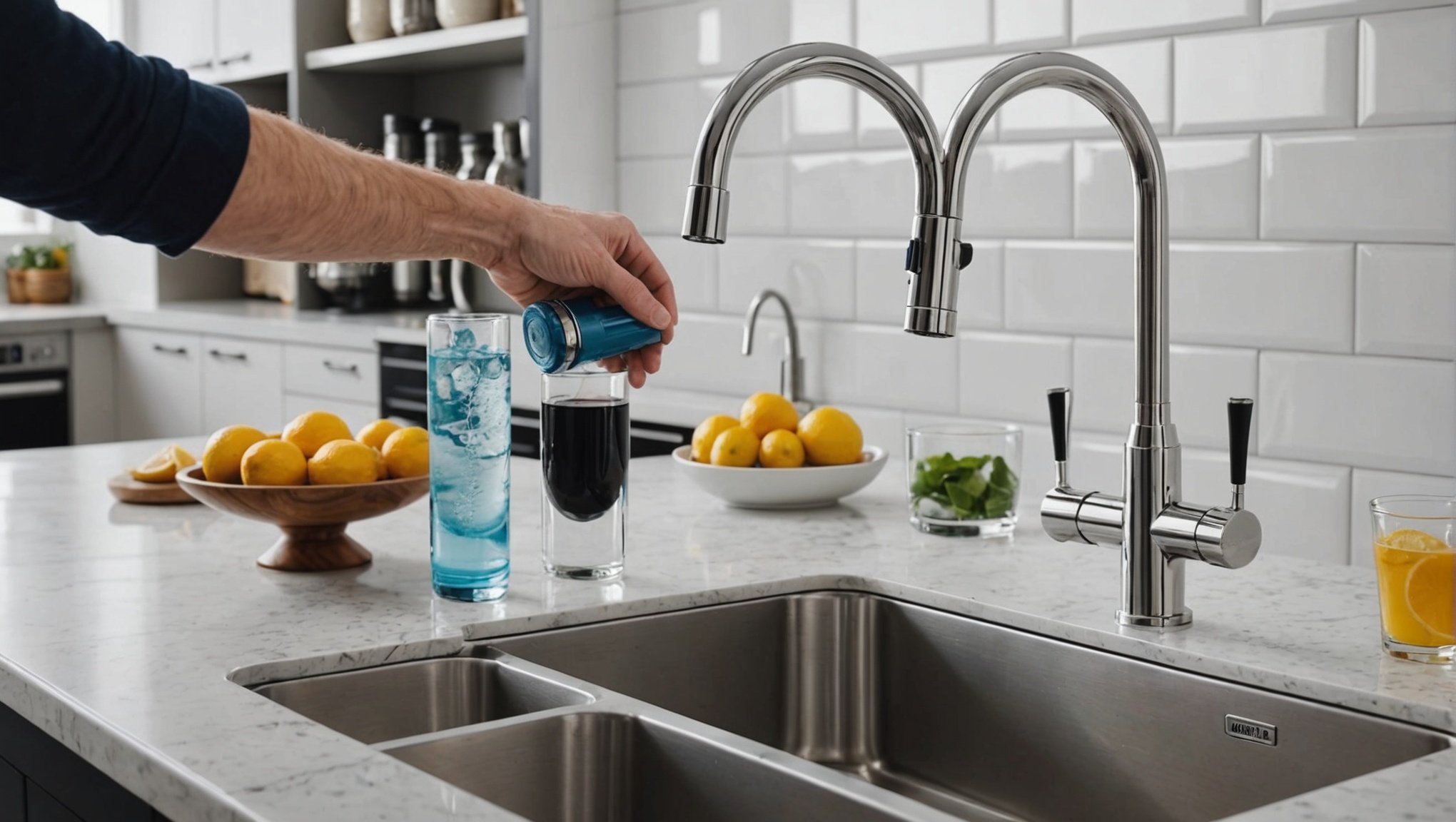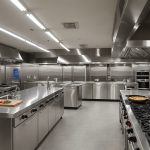Are you tired of drinking tap water filled with impurities? Installing a water filtration system in your kitchen can transform your water quality and elevate your cooking. This guide simplifies the installation process, providing step-by-step instructions tailored for both novices and experts. Learn the benefits, choose the right system, and become empowered to make informed choices for your family’s health. Enjoy cleaner, fresher water effortlessly!
Introduction to Water Filtration Systems
Water filtration systems are essential for ensuring the quality and safety of the water we consume. These systems are designed to remove contaminants and impurities, providing cleaner and healthier water for everyday use. Understanding the different types of water filtration systems and their benefits can help you make an informed choice for your home.
Also to see : Unlock the Power of Sliding Shelves: Transform Your Pantry Organization for Maximum Efficiency!
There are various types of water filters available, each catering to specific needs and preferences. Some common types include activated carbon filters, reverse osmosis systems, and ultraviolet (UV) filters. Activated carbon filters are popular for their ability to remove chlorine, sediment, and volatile organic compounds (VOCs) from water. Reverse osmosis systems, on the other hand, use a semi-permeable membrane to eliminate a wide range of contaminants, including heavy metals and dissolved solids. UV filters employ ultraviolet light to disinfect water by neutralizing bacteria and viruses.
Installing a water filtration system in your kitchen offers numerous benefits. It improves the taste and odor of the water, making it more enjoyable to drink and cook with. Additionally, filtered water can protect household appliances by reducing mineral buildup, ultimately extending their lifespan. Moreover, using a water filtration system can be a more environmentally friendly option than relying on bottled water, reducing plastic waste and conserving resources.
Also to read : Transform Your Kitchen: Expert Tips for Minimizing Cooking Odors Effectively
Necessary Tools and Materials
When installing a water filtration system, having the right installation tools and water filtration materials is crucial for a smooth and efficient setup. Whether you’re a DIY enthusiast or a first-timer, preparing adequately can make the process more manageable.
Essential Tools
For most installations, you’ll need basic DIY tools such as a wrench, screwdriver, and pliers. These are essential for connecting pipes and securing the filtration unit. A drill may also be necessary if mounting the system on a wall. Ensure you have a tape measure to accurately position your system components.
Recommended Materials
The materials required can vary depending on the type of water filtration system you choose. For instance, reverse osmosis systems often require additional tubing and fittings. Activated carbon filters might need replacement cartridges, while UV filters require a power source for the UV light. Always check the manufacturer’s instructions for specific water filtration materials needed.
Safety Equipment
Safety should never be overlooked. Use protective gloves and eyewear to avoid injury while handling tools and materials. Ensure your workspace is well-ventilated, especially if using adhesives or sealants. Taking these precautions will help you install your water filtration system safely and effectively.
Step-by-Step Installation Guide
Setting up a water filtration system can be a rewarding DIY installation project, ensuring clean water for your household. Follow this guide for a successful water filter setup.
Preparing for Installation
Before starting the installation process, gather all necessary tools and materials. Ensure you have a clear workspace and access to the main water supply. Review the manufacturer’s instructions to understand specific requirements for your chosen system. Check for any additional components needed, such as tubing or mounting brackets, to avoid interruptions during the installation.
Connecting the Water Supply
To connect your water filtration system to the main water supply, start by turning off the water supply valve. This prevents water flow during the installation process. Locate the cold water line under your sink and disconnect it using a wrench. Attach the provided adapter to the valve, ensuring a secure fit. Reconnect the water line to the adapter, verifying there are no leaks.
Installing the Filtration Unit
Position the filtration unit in the designated area, ensuring it is easily accessible for maintenance. Secure the unit using the appropriate brackets or mounts. Connect the tubing from the water supply to the inlet of the filtration unit, following the manufacturer’s guidelines. Finally, turn on the water supply and check for any leaks, ensuring a successful water filter setup.
Visual Aids for Installation
When installing a water filtration system, installation visuals such as diagrams and instructional images can be invaluable. These tools provide a clear representation of the setup process, helping to simplify complex instructions and reduce the risk of errors. By offering a visual reference, they ensure that each component is correctly positioned and connected, enhancing the overall efficiency of the installation.
Importance of Using Visuals
Visual aids are crucial for both novice and experienced DIY enthusiasts. They offer a step-by-step guide that complements written instructions, making it easier to follow the process. Visuals can highlight critical steps, such as connecting the water supply or positioning the filtration unit, ensuring each task is completed accurately.
Overview of Diagrams and Images
Diagrams typically include detailed schematics of the filtration system, showing how each part fits together. Instructional images may provide real-life photos of the installation process, offering a practical perspective. These visuals can be found in user manuals or online resources provided by manufacturers.
Interpreting Visual Aids Effectively
To make the most of these aids, carefully study each diagram and image before beginning the installation. Note any symbols or labels that indicate specific actions or components. Cross-reference with written instructions to ensure comprehensive understanding, facilitating a smooth and successful setup.
Common Installation Issues and Troubleshooting
When setting up a water filtration system, encountering installation problems is not uncommon. Identifying and addressing these issues promptly ensures a successful installation and optimal performance of your system.
Frequent Problems
Some common issues include leaks, low water pressure, and incorrect filter placement. Leaks often occur at connection points due to improper sealing or loose fittings. Low water pressure might result from clogged filters or incorrect tubing installation. Incorrect filter placement can lead to inefficient filtration, compromising water quality.
Troubleshooting Methods
To tackle these installation problems, follow a systematic approach:
- Leaks: Inspect all connection points. Tighten fittings and ensure seals are intact. Use plumber’s tape to secure joints if necessary.
- Low Water Pressure: Check filters for clogs and replace them if needed. Verify that tubing is correctly connected and free from kinks or bends.
- Incorrect Filter Placement: Review the manufacturer’s instructions to ensure filters are positioned correctly. Adjust as needed for optimal filtration.
Tips for Success
Ensure a smooth installation by double-checking all connections and components before turning on the water supply. Regularly maintain your system by replacing filters as recommended. By addressing these common issues and following these tips, you can enjoy clean, filtered water without hassle.
Maintenance Tips for Water Filtration Systems
Ensuring the longevity of filters and maintaining optimal water quality requires regular attention to water filter maintenance. Understanding the signs that indicate when a filter replacement is necessary can prevent potential issues and keep your system functioning efficiently.
Regular Maintenance Practices
To extend the life of your water filtration system, adhere to a consistent upkeep routine. This includes:
- Inspecting the system: Regularly check for leaks, unusual noises, or any visible damage.
- Cleaning the components: Remove any sediment or debris from the filter housing and other parts.
- Replacing filters: Follow the manufacturer’s guidelines for filter replacement intervals, typically every 6 to 12 months, depending on usage and water quality.
Signs for Filter Replacement
Recognising when to replace filters is crucial. Look out for:
- Decreased water flow: A significant drop in water pressure may indicate a clogged filter.
- Changes in water taste or odour: If the water starts to taste or smell off, it’s time for a new filter.
- Visible sediment: Discolouration or particles in your water are clear signs of filter inefficiency.
Best Practices for Optimal Water Quality
- Schedule regular checks: Set reminders for maintenance tasks.
- Use high-quality filters: Invest in reputable brands to ensure effective filtration.
- Keep a maintenance log: Document all maintenance activities for reference.
FAQs About Water Filtration System Installation
Installing a water filtration system can raise several installation FAQs. Addressing these water filter questions and concerns ensures a smoother setup and optimal system performance.
Common Installation Questions
- How long does the installation take? Typically, setting up a water filtration system takes a few hours, depending on the complexity of the system and your familiarity with the process.
- Do I need a professional for installation? While many systems are designed for DIY installation, hiring a professional may be beneficial for complex setups or if you’re uncomfortable with plumbing tasks.
Addressing User Concerns
- Will the system affect water pressure? Properly installed systems should not significantly reduce water pressure. Ensure filters are clean and tubes are correctly connected to maintain optimal flow.
- Is filtered water safe for all uses? Yes, filtered water is safe for drinking, cooking, and other household uses. It removes contaminants while preserving essential minerals.
Clarifying Misconceptions
- Do water filters remove all contaminants? While highly effective, no system removes every contaminant. Choose a system that targets specific impurities relevant to your water source for best results.
Professional Installation vs. DIY
Choosing between professional installation and a DIY approach for your water filtration system involves several considerations. Both methods have their distinct advantages and drawbacks, making it essential to weigh your options carefully.
Comparison of DIY Installation and Hiring a Professional
The DIY vs. professional debate often centres around cost and expertise. DIY installation is typically more economical, allowing homeowners to save on labour expenses. It offers the satisfaction of completing a project independently. However, it demands a certain level of skill and familiarity with plumbing tasks. On the other hand, hiring a professional ensures the job is done correctly and efficiently, reducing the risk of errors. Professionals bring specialised knowledge and experience, which can be invaluable, especially for complex systems.
Pros and Cons of Each Approach
DIY installation is cost-effective and flexible, but it may lead to mistakes if not executed properly. Professional installation, while more expensive, guarantees precision and reliability. It also saves time and effort, offering peace of mind.
Factors to Consider When Deciding on the Installation Method
Consider your budget, time availability, and expertise level. For intricate systems or if you’re unsure about the process, opting for installation services might be the best choice. Conversely, a simple system and a confident DIY attitude could make self-installation viable.
Conclusion and Additional Resources
Throughout this article, we’ve explored the significance of water filtration systems, detailing their types, installation processes, and maintenance practices. Understanding these elements is crucial in ensuring the quality and safety of your household water supply. For those interested in delving deeper, several additional resources can enhance your knowledge and provide further guidance.
To continue your learning journey, consider exploring books and online articles that offer comprehensive insights into the science behind water filtration. These materials often provide water filtration tips that can help in choosing the right system and maintaining it effectively. Additionally, manufacturer websites frequently host user manuals and FAQs, serving as valuable further reading options.
For hands-on support, online forums and community groups can be excellent platforms to connect with other users. These spaces allow you to share experiences, seek advice, and troubleshoot common issues. Engaging with these additional resources not only broadens your understanding but also empowers you to make informed decisions about water filtration systems. Remember, continuous learning and proactive maintenance are key to enjoying the benefits of clean, filtered water in your home.






